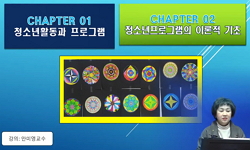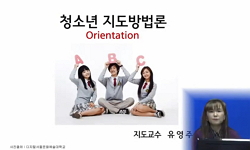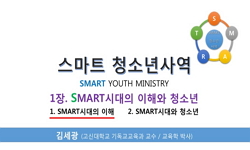본 연구는 청소년활동역량이 진로태도성숙에 미치는 영향을 알아보았다. 최근 사회적으로 진로에 대한 관심이 높아지고 있는 상황을 비추어 볼 때 청소년활동 프로그램의 질적 향상이 강화...
http://chineseinput.net/에서 pinyin(병음)방식으로 중국어를 변환할 수 있습니다.
변환된 중국어를 복사하여 사용하시면 됩니다.
- 中文 을 입력하시려면 zhongwen을 입력하시고 space를누르시면됩니다.
- 北京 을 입력하시려면 beijing을 입력하시고 space를 누르시면 됩니다.
https://www.riss.kr/link?id=T14437192
- 저자
-
발행사항
서울 : 명지대학교 일반대학원, 2017
-
학위논문사항
학위논문(석사) -- 명지대학교 일반대학원 , 청소년지도학과 , 2017. 2
-
발행연도
2017
-
작성언어
한국어
- 주제어
-
DDC
362.7 판사항(22)
-
발행국(도시)
서울
-
기타서명
A Study on the Effect of Youth Activity Competency on Career Attitude Maturity
-
형태사항
vii, 83 p. ; 30 cm
-
일반주기명
명지대학교 논문은 저작권에 의해 보호받습니다.
지도교수:권일남
권말에 설문지 수록.
참고문헌 : p. 67-72. - 소장기관
-
0
상세조회 -
0
다운로드
부가정보
국문 초록 (Abstract)
본 연구는 청소년활동역량이 진로태도성숙에 미치는 영향을 알아보았다. 최근 사회적으로 진로에 대한 관심이 높아지고 있는 상황을 비추어 볼 때 청소년활동 프로그램의 질적 향상이 강화되어야 하며 이를 위해 과학적 근거에 기반을 둔 수요자 중심의 청소년활동 프로그램 제공이 필요할 것으로 판단된다. 이에 본 연구에서는 청소년활동역량을 토대로 진로체험활동 프로그램 개발의 기초자료를 제공하는 데 목적이 있다.
이를 위해 서울특별시, 경기도, 충청남도 소재의 중ㆍ고등학교 및 청소년시설에 소속되어있는 중ㆍ고등학교 재학생 1,418명을 연구대상으로 하여 최종적으로 1,131개의 자료를 분석하였다. 측정도구는 권일남 외(2009)의 청소년활동역량검사(42문항), 이기학(1997)의 진로태도성숙도검사(47문항)를 사용하였다. 분석방법은 SPSS statistics 22.0을 사용하여 빈도분석, 독립표본 t-검정, 상관분석, 다중회귀분석을 실시하였다. 통계적 유의수준은 5%로 하였다.
본 연구에서 확인된 주요 연구 결과는 다음과 같다.
첫째, 청소년활동역량과 진로태도성숙의 일반적 특성에 따른 차이를 확인하였다. 청소년활동역량은 성별의 차이에서 남성이 자아역량, 신체역량, 갈등조절역량, 성취동기역량, 대인관계역량의 점수가 더 높게 나타났다. 교급별 차이에서는 중학생이 신체역량, 대인관계역량, 시민성역량의 점수가 더 높은 것으로 나타났다. 자유학기제의 경우 자유학기제 경험이 있는 청소년이 자아역량과 성취동기역량의 점수가 높게 나타났다. 청소년활동에서는 청소년활동 경험이 있는 청소년이 문제해결역량, 성취동기역량, 대인관계역량, 리더십역량의 점수가 더 높은 것으로 나타났다.
한편, 진로태도성숙은 성별의 차이에서 여성은 준비성과 목적성에서, 남성은 확신성에서 진로태도성숙 점수가 더 높은 것으로 나타났다. 교급별 차이에서는 결정성과 준비성은 중학생이 높았으나 확신성은 고등학생이 더 높은 것으로 나타났다. 자유학기제의 경우 자유학기제 경험이 있는 청소년이 확신성에서 더 높은 점수가 나타났다. 청소년활동에서는 청소년활동 경험이 있는 청소년이 전체 진로태도와 준비성의 진로태도성숙 점수가 더 높은 것으로 나타났다.
둘째, 청소년활동역량의 구성요소별로 높은 집단과 낮은 집단으로 구분하여 청소년활동역량의 수준에 따른 진로태도성숙의 차이를 확인하였다. 전체 진로태도는 모든 청소년활동역량의 구성요소에서 역량의 수준이 높은 집단이 낮은 집단에 비해 진로태도성숙 점수가 더 높은 것으로 나타났다. 세부적으로 결정성, 준비성, 확신성은 모든 청소년활동역량의 구성요소에서 역량의 수준이 높은 집단이 진로태도성숙 점수가 더 높은 것으로 나타났다. 독립성은 신체역량을 제외한 7가지 역량에서 역량의 수준이 높은 집단이 진로태도성숙 점수가 더 높은 것으로 나타났다. 목적성은 갈등조절역량에서만 역량의 수준이 높은 집단이 진로태도성숙점수가 더 높은 것으로 나타났다.
셋째, 청소년활동역량과 진로태도성숙과의 주요 변인 간의 관계를 확인하였다. 전체 진로태도는 모든 청소년활동역량의 구성요소와 정적 상관을 보였다. 세부적으로 결정성, 준비성, 확신성은 청소년활동역량의 모든 구성요소와 정적 상관을 보였으며 독립성은 신체역량을 제외한 7가지 역량과 정적 상관을 보였다. 목적성은 갈등조절역량과는 정적 상관을 보였으나 신체역량과는 부적 상관을 보였다.
넷째, 청소년활동역량이 진로태도성숙에 미치는 영향을 확인하였다. 전체 진로태도에 22.4%의 설명력을 보인다. 세부적으로 확신성(32.5%), 준비성(29.5%), 독립성(11.6%), 결정성(8.7%), 목적성(7.2%) 순으로 높은 설명력을 보였다. 또한, 청소년활동역량의 구성요소 중 갈등조절역량이 진로태도성숙에 가장 많은 영향을 미치는 것으로 나타났다.
결론적으로 청소년활동역량은 진로태도성숙과 밀접한 관계가 있으며, 청소년활동역량의 구성요소 중 갈등조절역량이 진로태도성숙에 가장 많은 영향을 미치는 것으로 나타났다. 이에 본 연구결과를 토대로 청소년활동역량을 습득하는 동시에 진로태도성숙을 향상할 수 있도록 청소년활동 현장에서 적극적으로 활용되기를 기대한다.
다국어 초록 (Multilingual Abstract)
This study aimed to analyze the effects of youth activity competency on career attitude maturity. With the recently increased concerns about career at the social level, it is necessary to promote qualitative improvement of youth activity programs and ...
This study aimed to analyze the effects of youth activity competency on career attitude maturity. With the recently increased concerns about career at the social level, it is necessary to promote qualitative improvement of youth activity programs and to provide consumer-centered youth activity programs on the scientific basis. The purpose of this study was to provide basic data that could help develop career-experiencing activity programs on the basis of youth activity competency.
For this purpose, the data from 1,131 out of 1,418 middle and high school students who belonged to secondary schools and youth facilities in Seoul, Gyeonggi Province, and South Chungcheong Province were finally analyzed. The youth activity competency scale (42 items) developed by Gwon et al. (2009) and the career attitude maturity scale (47 items) developed by Lee (1997) were used. An SPSS 22.0 program was used to perform frequency analysis, independent t-test, correlation analysis, and multiple regression analysis. The statistical significance level was set at 5%.
The main results of this study are as follows:
First, the differences in youth activity competency and career attitude maturity by the general characteristics were analyzed. As for youth activity competency, the boys scored higher for self-competency, physical competency, conflict control competency, achievement motivation competency, and interpersonal competency. In terms of school level, the middle school students scored higher for physical competency, interpersonal competency, and citizenship competency. The adolescents having experience of the free semester system scored higher for self-competency and achievement motivation competency. Those having experience of youth activity scored higher for problem-solving competency, achievement motivation competency, interpersonal competency, and leadership competency.
As for career attitude maturity, the girls scored higher for preparedness and purposefulness and the boys scored higher for confidence. In terms of school level, the middle school students scored higher for determination and preparedness and the high school students scored higher for confidence. The adolescents having experience of the free semester system scored higher for confidence. Those having experience of youth activity scored higher for career attitude in general and preparedness.
Second, the differences in career attitude maturity by the level of youth activity competency were analyzed in terms of each component of youth activity competency. The group with a higher level of each component of youth activity competency scored higher for career attitude maturity. Specifically, the group with a higher level of each component of youth activity competency scored higher for career attitude maturity in terms of determination, preparedness, and confidence. The group scoring higher for seven types of competency, not for physical competency, scored higher for career attitude maturity in terms of independence. The group scoring higher for conflict control competency alone scored higher for career attitude maturity in terms of purposefulness.
Third, the association between the principal variables of youth activity competency and those of career attitude maturity was analyzed. Every component of youth activity competency was positively correlated with career attitude in general. Specifically, determination, preparedness, and confidence were positively correlated with every component of youth activity competency and independence was positively correlated with seven types of competency, not with physical competency. Purposefulness was positively correlated with conflict control competency but was negatively correlated with physical competency.
Fourth, the effects of youth activity competency on career attitude maturity were analyzed. Career attitude in general had explanatory power of 22.4%. Specifically, confidence (32.5%) had the greatest explanatory power, followed by preparedness (29.5%), independence (11.6%), determination (8.7%), and purposefulness (7.2%). Conflict control competency among the components of youth activity competency had the greatest impact on career attitude maturity.
In conclusion, youth activity competency was closely associated with career attitude maturity and conflict control competency among the components of youth activity competency had the greatest impact on career attitude maturity. These results are expected to be applied positively to youth activity practice with the objective of acquiring youth activity competency and improving career attitude maturity.
목차 (Table of Contents)
- 표목차 ⅲ
- 그림목차 ⅴ
- 국문초록 ⅵ
- 제 1 장 서론
- 표목차 ⅲ
- 그림목차 ⅴ
- 국문초록 ⅵ
- 제 1 장 서론
- 제 1 절 연구의 필요성 1
- 제 2 절 연구의 목적 5
- 제 2 장 이론적 배경
- 제 1 절 청소년활동역량 6
- 1. 청소년활동의 개념 6
- 2. 역량의 개념 10
- 3. 역량의 구성체제 12
- 4. 청소년활동과 역량 17
- 제 2 절 진로태도성숙 20
- 1. 진로태도성숙의 개념 20
- 2. 진로태도성숙의 구성요소 22
- 제 3 절 청소년활동역량과 진로태도성숙과의 관계 25
- 제 3 장 연구방법
- 제 1 절 연구대상 27
- 제 2 절 측정도구 28
- 1. 청소년활동역량검사 28
- 2. 진로태도성숙도검사 30
- 3. 일반적 특성 31
- 제 3 절 연구절차 31
- 제 4 절 자료분석 32
- 제 4 장 연구결과
- 제 1 절 일반적 특성에 따른 청소년활동역량 및 진로태도성숙의 차이 33
- 1. 일반적 특성에 따른 청소년활동역량의 차이 33
- 2. 일반적 특성에 따른 진로태도성숙의 차이 37
- 제 2 절 청소년활동역량의 하위요소에 따른 진로태도성숙의 차이 42
- 1. 자아역량에 따른 진로태도성숙의 차이 42
- 2. 신체역량에 따른 진로태도성숙의 차이 43
- 3. 갈등조절역량에 따른 진로태도성숙의 차이 44
- 4. 문제해결역량에 따른 진로태도성숙의 차이 45
- 5. 성취동기역량에 따른 진로태도성숙의 차이 46
- 6. 대인관계역량에 따른 진로태도성숙의 차이 47
- 7. 리더십역량에 따른 진로태도성숙의 차이 48
- 8. 시민성역량에 따른 진로태도성숙의 차이 49
- 제 3 절 청소년활동역량과 진로태도성숙과의 상관분석 51
- 제 4 절 청소년활동역량과 진로태도성숙과의 회귀분석 53
- 1. 청소년활동역량이 진로태도성숙에 미치는 영향 53
- 2. 청소년활동역량이 진로태도성숙의 결정성에 미치는 영향 54
- 3. 청소년활동역량이 진로태도성숙의 준비성에 미치는 영향 54
- 4. 청소년활동역량이 진로태도성숙의 독립성에 미치는 영향 55
- 5. 청소년활동역량이 진로태도성숙의 목적성에 미치는 영향 56
- 6. 청소년활동역량이 진로태도성숙의 확신성에 미치는 영향 57
- 제 5 장 요약, 결론 및 제언
- 제 1 절 요약 58
- 제 2 절 논의 및 결론 60
- 제 3 절 제언 66
- 참고문헌 67
- 부록 73
- Abstract 81











